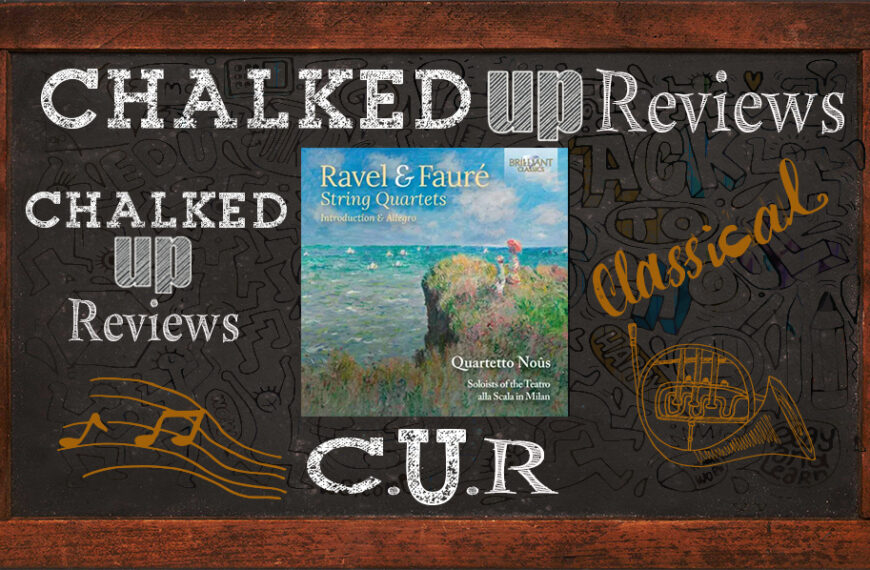
By Brice Boorman
From the very first moments of Sophia Liu’s debut studio album, Chopin, Liszt, the listener is confronted with a pianist of remarkable poise and maturity. Liu may still be a teenager, but her interpretative worldview is already greatly informed. That she brings this to such demanding repertoire, Liszt’s bravura transcriptive fantasy and Chopin’s national-dance idiom, speaks to her technical chops and to her conceptual ambition.
Liu’s decision to juxtapose Liszt and Chopin is a compelling one. They are two composer-pianists of the nineteenth-century Romantic tradition, each with a distinct, linked ethos. Liszt brings the larger-than-life virtuoso spectacle, the symphonic reimagining of operatic or vocal material. Chopin offers the intimate, idiomatic absorption of national dance forms, poetic miniatures, and the marrying of pianist-composer voice. For a debut recording to assert such breadth is ambitious, and Liu handles it with poise and musicality.
Her biographical profile underscores the seriousness of the enterprise. Born in Shanghai, raised in Japan, relocated to Montréal at age 7 to study with the eminent pedagogue Dang Thai Son, and already lauded for phenomenal virtuosity and supernaturally fluid touch. The album thus positions itself as an introduction and a statement of musical maturity.
Technically, Liu comes across as extraordinarily assured with clean articulation even in the most rapid Liszt passage-work; pedal usage that is discreet, as you never wonder “what would happen without it”; rhythm and pulse that feel controlled and elastic rather than mechanical. It is interesting how she shapes phrases and sustains large-scale forms. Although the programme is by nature segmented (nine tracks, contrasting styles), the overarching narrative she creates is coherent, beginning with Liszt’s dreamy “song” world, moving to Chopin’s polish and dance, closing with the grand sweep of the Andante spianato/Polonaise.
Let’s focus on two items of the album which offer especially fertile ground for reflection: Liszt’s Liebesträume No. 3 and Chopin’s Four Mazurkas Op. 17. Starting with Liszt: Liebesträume, S. 541 No. 3 (“Oh Lieb, so lang du lieben kannst”), Liu’s reading of this beloved piece comes across as inward-looking rather than showy. From the opening bars, she gives us a melody unhurried, singing, vocal-like in line shape. The accompaniment figures, rather than recede, are carefully modulated so as to support the top line. The second statement of the theme, following the key-change, is particularly instructive. Liu opts to colour the melody slightly differently, adding subtle inflections (dynamic shading, a tiny delay, a softening of tone) which highlight the transformation wrought by the key modulation. In terms of how to make the repeated sections feel new, Liu is very successful in her interpretations.
Her eight-note figuration patterns are shaped as breathing phrases by, at times, allowing micro-pauses, slight relaxations of tempo, just enough to let the ear breathe. Many young pianists rush the flow; Liu resists. Her soft romantic ending is a consummate choice as she does not oversell; she allows resonance and silence to speak.
For the Chopin: Four Mazurkas, Op. 17, Liu offers a reading of the mazurka form that is infused with dance-rhythm vitality and singing lyricism. This is the combination that is not easy to pull off, but is the intended effect by Chopin.
“No. 1 in B-flat Major (Vivo e risoluto)” is given character by her articulation of legato vs. staccato, being crisp, and she retains a sense of percussive foot-tap in the left-hand rhythm (the mazurka’s implied triple-plus-quaver pulse) while letting the upper line soar. Her time-feel is flexible but never detached from dance. The dynamics bring out sectional form (A-B-A) with shape.
In “No. 2 in E Minor (Lento, ma non troppo),” Liu ensures she doesn’t flatten the form. The two repeated A-sections feel familiar but not identical as she varies articulation and tone on the repeat, giving the listener a sense of development rather than repetition. Her separate voicing of left- and right-hand lines brings forward the subtleties of Chopin’s inner voices.
“No. 3 in A-flat Major (Legato assai),” composed early in Chopin’s compositional life, this mazurka has a more straightforward structure as an expressive vehicle. Liu emphasises the dual-rhythmic dance-feel (the left-hand foot-beat, the right-hand upper ornamentation) and uses the pedal in a manner that supports legato but never smears. Her touch variety is noteworthy, limpid in the connected phrases, sharper in the ornament-figures. For listeners aiming to distinguish “mazurka as song” vs. “mazurka as dance,” this track is instructive.
“No. 4 in A Minor (Lento, ma non troppo)” Liu takes a more introverted and reflective flow. Liu’s approach brings out the dotted-rhythm figures as expressive devices, not just rhythmic additives. She shapes the phrases so that the two hands engage in a gentle conversation rather than simply sharing material. Her pedaling is restful, allowing the dotted rhythms to retain clarity rather than blur. This is a reading that balances expressive yearning with rhythmic integrity.
The debut recording, Chopin, Liszt, by Sophia Liu, is superbly executed and artistically mature beyond what one might expect given her age. For the audience of classical fans, it offers a compelling artistic statement and a rich interpretation. Liu emerges as a pianist to watch, one whose technique is in service of musical thought, whose interpretative instincts are emotive, and whose future repertoire and recording projects will no doubt excite.


